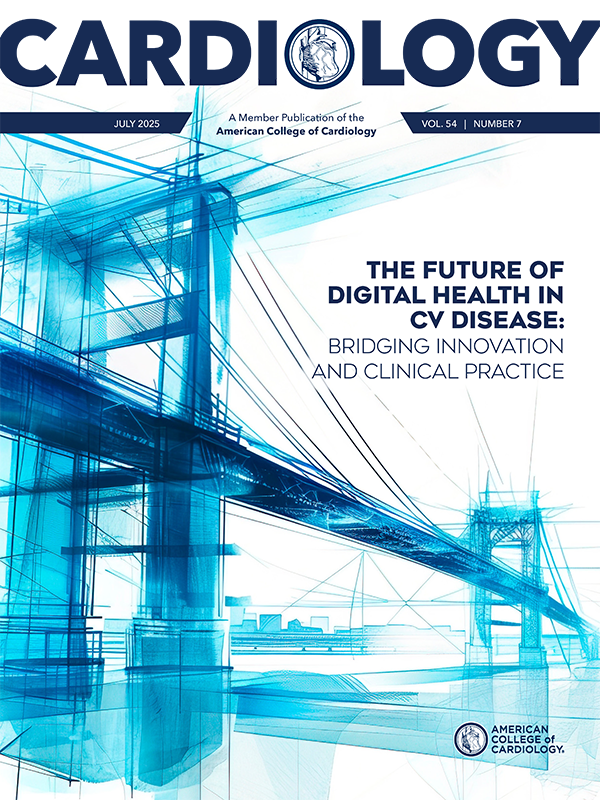Quality Improvement For Institutions | NCDR: Data Driving Better Outcomes

ACC's NCDR suite of registries is a robust source of data for researchers, and a critical component in continuing to help hospitals, practices and clinicians advance the quality of cardiovascular care and improve patient outcomes for all.
The real-world evidence from recent NCDR research provides insights on transseptal mitral valve-in-valve (MViV) replacement along with reducing events in the setting of left atrial appendage occlusion (LAAO).
Read on and then share your thoughts about the findings on social media using #NCDR and #CardiologyMag or join in discussions on the ACC's LinkedIn page.Long-Term Outcomes of Patients With TR Undergoing MViV Replacement
Patients undergoing transseptal MViV replacement with preprocedural severe or greater tricuspid regurgitation (TR), 30-day residual severe or greater TR, and unchanged or worsened TR post procedure, had a greater risk of all-cause mortality at the three-year follow-up, according to a study published in JACC: Cardiovascular Interventions.
Kashish Goel, MD, FACC, et al., used data from the STS/ACC TVT Registry and included 4,938 patients (21% with severe or greater TR at baseline) from 513 sites undergoing MViV from 2015 to 2024. Propensity score matching was used to determine the impact of TR on three-year all-cause mortality.
Patients with severe or greater TR at baseline exhibited a significantly higher rate of three-year all-cause mortality vs. patients with moderate and mild or less TR (39% vs. 31% vs. 28%; p=0.004). Three-year mortality rates were also significantly higher among patients who had residual severe or greater TR at 30 days post procedure vs. those with moderate or less TR (43% vs. 31%; p=0.04).
Improvement in TR grade from baseline to 30 days, which occurred in 68% of patients with severe or greater TR at baseline, was associated with lower mortality in contrast with patients who had unchanged or worse TR.
"It is yet to be seen whether intervention for TR affects long-term mortality," write the authors. "However, this study suggests that any reduction of TR after MViV may be beneficial in reducing long-term mortality."
In an accompanying editorial comment, Christos Iliadis, MD, adds that "the study highlights the need for multidisciplinary heart teams to consider the full spectrum of valvular disease when planning treatment strategies."
Lower Risk of Major Adverse Events, Ischemic Stroke in LAAO With Watchman FLX
Patients undergoing transcatheter LAAO with the Watchman FLX had significantly lower risk of major adverse events and ischemic stroke at one year vs. patients implanted with the Watchman 2.5 device, according to a study published in JACC: Cardiovascular Interventions.
Using data from ACC's LAAO Registry, Matthew J. Price, MD, FACC, et al., included 27,141 patients receiving the Watchman FLX and the same number of patients receiving the Watchman 2.5 device from 641 sites in the U.S. The study's primary endpoint was ischemic stroke.
At one-year follow-up, results showed that patients implanted with the Watchman FLX were less likely to experience major adverse events (adjusted hazard ratio [HR], 0.84; 95% CI, 0.80-0.88; p<0.0001), ischemic stroke (adjusted HR, 0.82; 95% CI, 0.68-0.98; p=0.02), and ischemic stroke or systemic embolism (adjusted HR, 0.74; 95% CI, 0.62-0.87; p=0.0003).
The authors also shared findings from transesophageal echocardiography performed 45 days post procedure, where the rate of device-related thrombus was similar for patients with the Watchman FLX vs. Watchman 2.5 (0.4% vs. 0.5%; p=0.27). The rate of peridevice leak was lower in the Watchman FLX group (14.7% vs. 23.5%; p<0.001).
"The incidence of [peridevice leak] after Watchman FLX implantation was still relatively frequent, occurring in approximately one in seven patients, and therefore particular attention should be paid to technical approaches that may further enhance full anatomical closure, such as detailed preprocedural planning, meticulous intraprocedural imaging, and appropriate selection of device type and size," write the authors.
In an accompanying editorial comment, Apostolos Tzikas, MD, PhD, and Athanasios Samaras, MD, add that "the comparative one-year safety and clinical effectiveness of the Watchman FLX compared with the Watchman 2.5 device show that LAAO device design improvements play an important role in improving patient outcomes."
Advancing Quality With ACC Accreditation
The College congratulates the latest hospitals to earn ACC Accreditation, HeartCARE Center Designation or Transcatheter Valve Certification. Click here to see if your site achieved accreditation in the second quarter of 2025.
NCDR: Data Powering Performance
More than 2,000 facilities worldwide participate in one or more the ACC's registries, forming a comprehensive network of cardiovascular care providers committed to ensuring evidence-based cardiovascular care, improving patient outcomes and lowering health care costs.
Learn more about all the NCDR registries and become a participant.
Bookmark the registry news page to keep up with the clinical insights from NCDR research.
Clinical Topics: Vascular Medicine
Keywords: Cardiology Magazine, ACC Publications, Tricuspid Valve Insufficiency, Ischemic Stroke, Embolism, Quality Improvement
